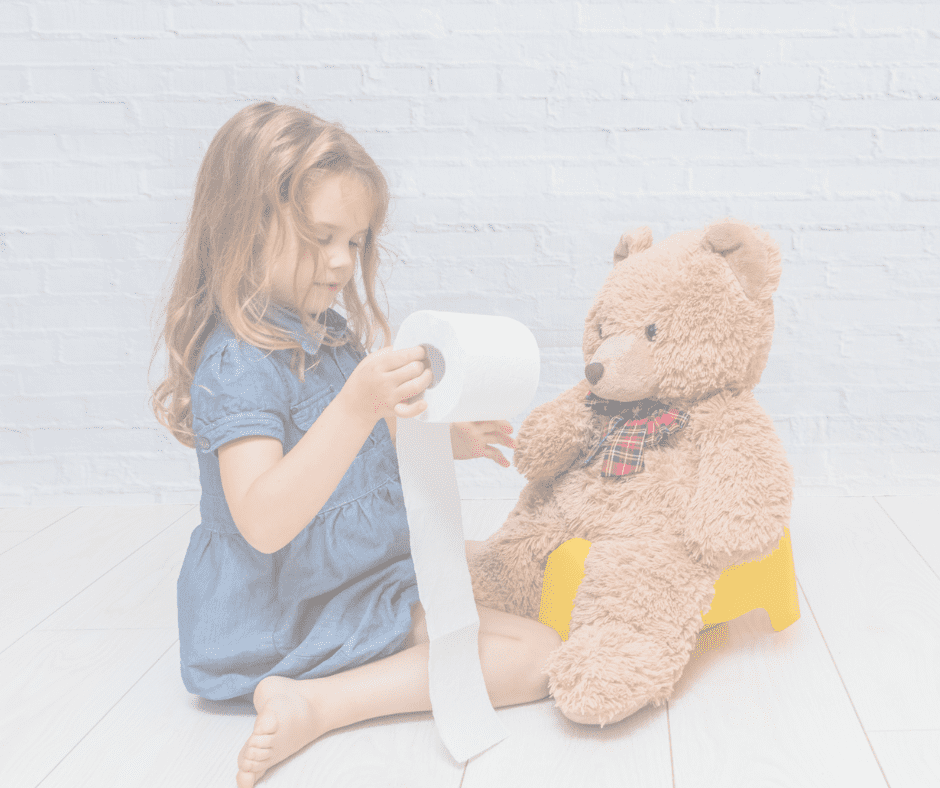Potty training isn’t just about saying goodbye to diapers, it’s a developmental process that depends on far more than age alone. From sensory needs to emotional readiness, every child brings a unique set of skills (and challenges) to the toilet learning journey. These 10 OT-backed potty training strategies are designed to support your child’s nervous system, build body awareness, and reduce power struggles—while giving you practical tools that actually help.
1. Use Visual Schedules and Consistent Routines
Why it works: Many kids—especially those on the spectrum—thrive on predictability. Routines reduce anxiety and give the child a roadmap.
How to implement:
- Print or draw a simple potty routine with images:
- Sit on potty
- Go potty
- Wipe
- Flush
- Wash hands
- Use the same language every time (“Time to sit on the potty now.”)
- Place the visual chart in the bathroom at eye level
Want an already created Visual Chart Custom for Toilet Training? Click here!
2. Practice Sitting without Pressure
Why it works: Builds positive associations with the toilet and reduces power struggles.
How to implement:
- Invite them to sit (clothed or unclothed) at consistent times: after meals, before bath, etc.
- Read a book, sing, or let them play with a small toy while sitting.
- Reinforce: “We sit and let our body decide if it’s ready.”
3. Create a Sensory-Friendly Bathroom Setup
Why it works: Sensory discomfort (cold seats, echoing toilets, bright lights) can make toileting feel unsafe.
How to implement:
- Use a padded toilet seat insert
- Provide a footstool for grounding (feet dangling = insecurity)
- Try softer lighting or a lamp if overhead lights are harsh
- Offer noise-canceling headphones or flush after they leave the room
4. Teach Interoception Through Play
Why it works: Many kids don’t recognize the signals their body gives them.
How to implement:
- Use language like: “What does your tummy feel like when you need to pee?”
- Practice body-based games: yoga poses, animal walks, or movement breaks that help increase bodily awareness.
- Encourage: “Let’s stop and check—do we feel full or empty?”
5. Use Timed Toileting (Not Force)
Why it works: Helps kids begin to anticipate potty time and builds consistency.
How to implement:
- Offer potty opportunities every 2–3 hours, without pressure
- Use a visual timer or sing a countdown song
- If they resist: “You don’t have to go, just try sitting.”
6. Address Fears & Control Battles Gently
Why it works: Resistance often stems from fear, not disobedience.
How to implement:
- Acknowledge their feelings: “You’re nervous about sitting. That’s okay.”
- Offer choices: “Do you want me to hold your hand, or should we sing a song together?”
- Avoid bribes, punishments, or threats—these increase anxiety and stall progress.
7. Model, Model, Model
Why it works: Kids learn best by watching.
How to implement:
- Let them see a same-gender sibling or parent use the toilet
- Narrate your own actions: “I’m listening to my body. It says it’s time to go potty.”
- Roleplay with dolls or stuffed animals
8. Celebrate Small Wins
Why it works: Reinforcement encourages repetition.
How to implement:
- Use praise over prizes: “You listened to your body. That was amazing.”
- Consider sticker charts only if they’re fun, not pressure-filled
- Keep tone light: “You sat! That’s the whole job right now!”
9. Stay Calm, Even When Accidents Happen
Why it works: Emotional safety leads to faster learning.
How to implement:
- Say: “Oops, your body’s still learning. Let’s clean up together.”
- Don’t show frustration—even if it’s the fifth accident of the day.
- Normalize setbacks: “All kids have accidents. Your body’s figuring it out.”
10. Use Predictable Timing + Offer Structured Choices
Why it works: Potty training success often depends more on the parent’s observation than the child’s readiness alone. When you track natural rhythms and offer clear, structured choices, you reduce power struggles and help the child feel in control within a safe routine.
How to implement:
- Notice when your child typically goes—after meals, before nap, or upon waking
- Create a predictable potty window: “After breakfast, we sit on the potty.”
- Announce first: “It’s potty time.” Then offer a choice: “Do you want to use the big potty or your little potty?”
“Should we read your potty book or sing our potty song?” - Keep it low-pressure: sitting is the goal—anything more is a bonus.
If you found these 10 OT-backed potty training strategies helpful and would like to learn more: Read the full blog HERE!
👉Watch & Learn CLICK HERE to watch 6 developmental signs your child is ready to potty train

View comments
+ Leave a comment